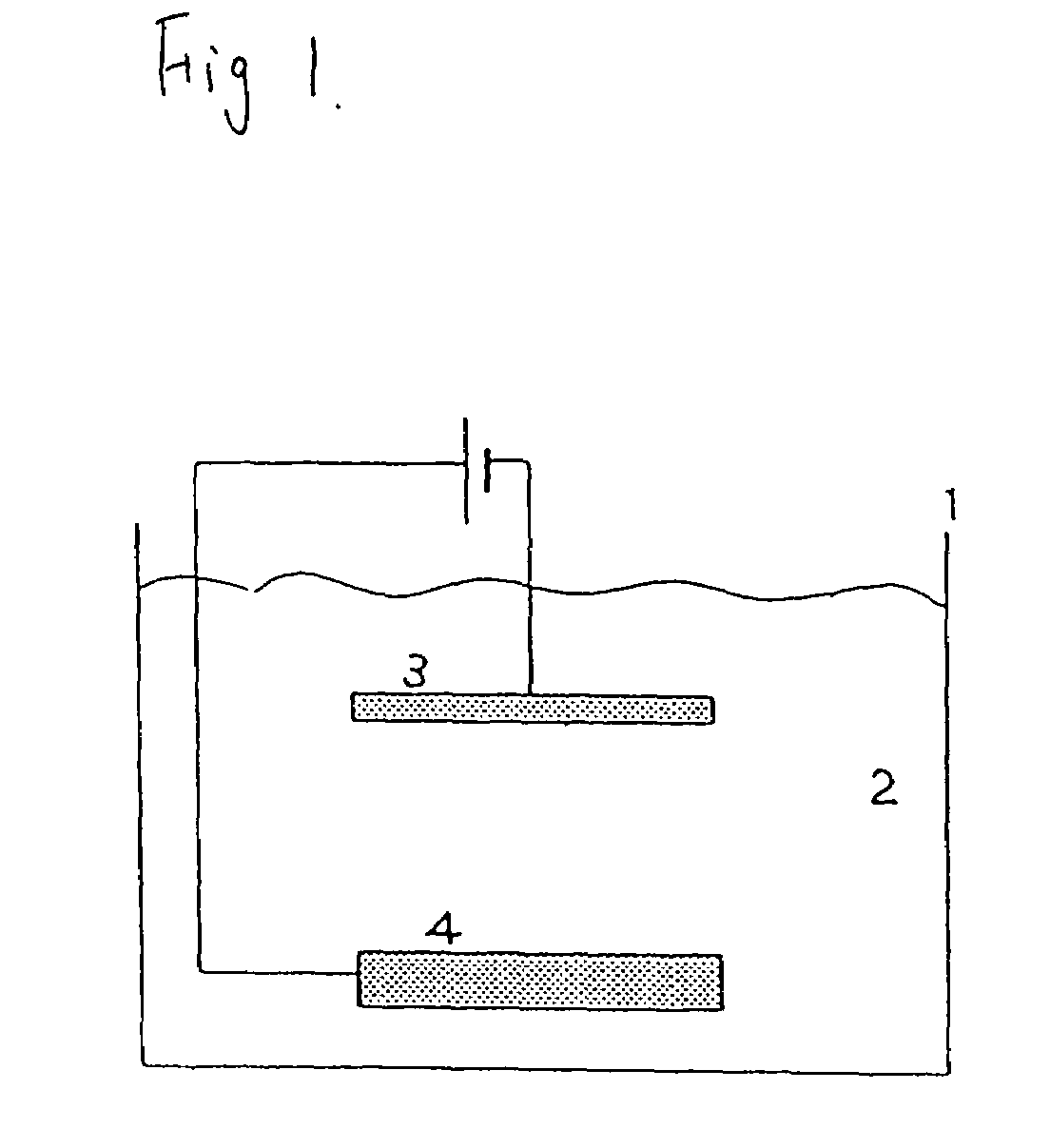Copper electroplating method, pure copper anode for copper electroplating, and semiconductor wafer plated thereby with little particle adhesion
a technology of pure copper and copper electroplating, which is applied in the direction of coatings, electrolysis components, electrolysis processes, etc., can solve the problems of inferior plating, additives within the plating liquid decomposing, and new problems, and achieve the effect of preventing particle adhesion
- Summary
- Abstract
- Description
- Claims
- Application Information
AI Technical Summary
Benefits of technology
Problems solved by technology
Method used
Image
Examples
examples 1 to 4
[0028]Pure copper having a purity of 4N to 5N was used as the anode, and a semiconductor wafer was used as the cathode. As shown in Table 2, with respect to the crystal grain size of these pure copper anodes, anodes adjusted respectively to 5 μm, 500 μm, and 2000 μm were used.
[0029]Further, the oxygen content of each of the foregoing anodes was less than 10 ppm. The analysis of the 4N pure copper anode is shown in Table 1.
[0030]As the plating liquid, copper sulfate: 50 g / L (Cu), sulfuric acid: 10 g / L, chlorine ion 60 mg / L, additive [brightening agent, surface active agent] (Product Name CC-1220: manufactured by Nikko Metal Plating): 1 mL / L were used. The purity of the copper sulfate within the plating liquid was 99.99%.
[0031]The plating conditions were plating temperature 30° C., cathode current density 4.0 A / dm2, anode current density 4.0 A / dm2, and plating time 12 hr. The foregoing conditions and other conditions are shown in Table 2.
[0032]
TABLE 1Analysis of 4N Pure Copper AnodeEl...
example 6
[0037]As shown in Table 3, pure copper having a purity of 4N to 5N was used as the anode, and a semiconductor wafer was used as the cathode. The crystal grain size of these pure copper anodes was 2000 μm.
[0038]As the plating liquid, copper sulfate: 50 g / L (Cu), sulfuric acid: 10 g / L, chlorine ion 60 mg / L, additive [brightening agent, surface active agent] (Product Name CC-1220: manufactured by Nikko Metal Plating): 1 mL / L were used. The purity of the copper sulfate within the plating liquid was 99.99%.
[0039]The plating conditions were plating temperature 30° C., cathode current density 4.0 A / dm2, anode current density 4.0 A / dm2, and plating time 12 hr.
[0040]With the foregoing Example 6, in particular, illustrated is an example in which the oxygen content was 4000 ppm. The foregoing conditions and other conditions are shown in Table 3.
[0041]After the plating, the generation of particles, plate appearance and embeddability were observed. The results are similarly shown in Table 3. Mor...
PUM
| Property | Measurement | Unit |
|---|---|---|
| crystal grain diameter | aaaaa | aaaaa |
| crystal grain diameter | aaaaa | aaaaa |
| crystal grain diameter | aaaaa | aaaaa |
Abstract
Description
Claims
Application Information
 Login to View More
Login to View More - R&D
- Intellectual Property
- Life Sciences
- Materials
- Tech Scout
- Unparalleled Data Quality
- Higher Quality Content
- 60% Fewer Hallucinations
Browse by: Latest US Patents, China's latest patents, Technical Efficacy Thesaurus, Application Domain, Technology Topic, Popular Technical Reports.
© 2025 PatSnap. All rights reserved.Legal|Privacy policy|Modern Slavery Act Transparency Statement|Sitemap|About US| Contact US: help@patsnap.com

